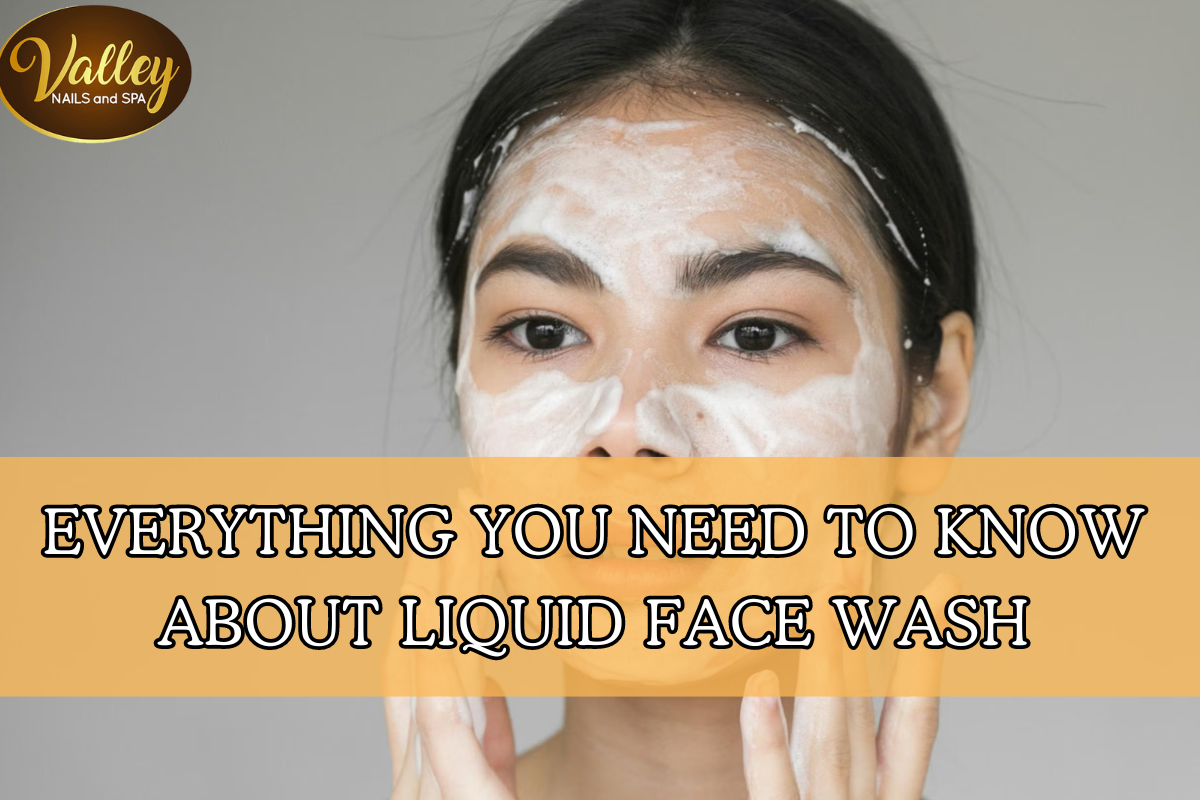Everything You Need to Know About Liquid Face Wash: All skin types benefit from daily cleansing and moisturising, but oily, dry, normal, combination, and sensitive skin have different needs. Understanding your skin type is the first step to proper care. But how do you identify your skin type? Simple observation yields the answer.
What’s My Skin Type? Each Type’s Common Qualities
Your skin, your largest organ, regulates body temperature and fights germs. This applies especially to the skin barrier. Water and harmful substances are kept out by this protective barrier, which is mostly lipids like ceramics.
Remember that everyone’s skin is different, but all skin types need a healthy skin barrier. Thus, there is no “one size fits all” approach to radiant, healthy skin. However, there are several unifying traits that can help you determine your skin type. Here are the main signs of oily, dry, normal, combination, or sensitive skin.
Oily skin
- Sebum production in oily skin makes it shiny and greasy, especially in the T-zone.
- According to the American Academy of Dermatology (AAD),2 oily skin may have fewer wrinkles but more enlarged pores, acne blemishes, blackheads, and whiteheads.
- Oily skin produces more natural oils, but it still needs moisture. Supporting oily skin requires products that nourish and hydrate without clogging pores or causing breakouts.
- The best oily skin routine includes a gentle, foaming cleanser that removes dirt, oil, and other impurities.
- It should also contain a lightweight, oil-free, non-comedogenic moisturiser to hydrate oily skin.
Dry skin
- Other skin types produce more natural oils than dry skin. This may dull and make it rough, flaky, or scaly. It may be tight, dehydrated, and prone to fine lines. It may also itch or irritate.
- Dry skin needs gentle, soothing, and hydrating ingredients like ceramics to maintain its moisture barrier.
- The Mayo Clinic advises dry skin patients to avoid long, hot showers, moisturise daily, and use fragrance-free, non-comedogenic, and alcohol-free skincare products.
Normal skin
- Balanced skin is neither dry nor oily. It rarely breaks out, flask, or feels greasy or tight. Normal skin appears smooth, has small pores, and is less sensitive and blemished.
- Normal skin needs proper skincare to look and feel its best, even though it has no specific issues.
- The ideal normal skin routine locks in moisture and supports the skin’s protective barrier.
Combination skin
- The T-zone is usually oily and the cheeks dry or normal in combination skin. Seasonal changes and stress or hormone fluctuations can affect this skin type.
- Oily or normal skin that’s dry in some places needs good cleansing and hydration.
- Check out our Ce-rave skincare routine for combination skin for tips on creating a daily routine.
Skin sensitivity
- Sensitive skin can be oily, dry, or normal. No matter your skin type, sensitive skin can be red, burning, itchy, or dry.
- These symptoms may be caused by environmental factors and ingredients like dyes or fragrance that make skin more sensitive to external irritants.
- You may be able to identify your skin’s triggers and avoid cleansers, moisturisers, and other products with those ingredients. You can also change your environment to avoid triggers.
How to Determine My Skin Type at Home?
If descriptions of skin types didn’t help, you can take home tests to determine your skin type. Here are two ways:
Method “watch and wait”
- This at-home test determines your skin type by observing its behaviour after cleansing.
- After washing your face with a gentle cleanser, pat it dry.
- Do wait 30 minutes.
- Having shiny skin throughout indicates oily skin.
- Tight, flaky, scaly skin indicates dry skin.
- Having only T-zone shine indicates combination skin.
- Normal skin is hydrated, comfortable, and non-oily.
Blotting sheet method
- Blotting sheets absorb oil when pressed to the skin and can reveal your skin type.
- After washing with a gentle cleanser, pat your face dry and wait 30 minutes.
- Apply blotting sheets to your face and hold them up to the light to see oil marks.
- If your sheets absorbed oil from all over your face, you have oily skin.
- With little oil absorption, you have dry skin.
- Your sheets show little T-zone oil if you have combination skin.
- Normal skin is when every area of your face has little oil.
Remember that any skin type can be sensitive or acne-prone, though normal skin may be less likely. Despite sensitivity and acne, you can care for your skin with the right products. Consult a board-certified dermatologist for a skin assessment and advice on the best skincare routine for your skin type.
If you like this Article about Everything You Need to Know About Liquid Face Wash please share this Article with your friends and family members.

1 thought on “Everything You Need to Know About Liquid Face Wash”